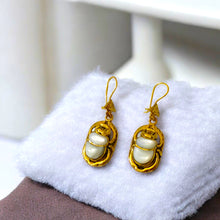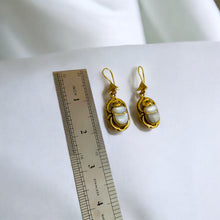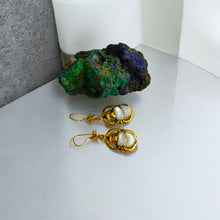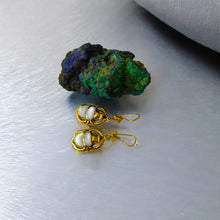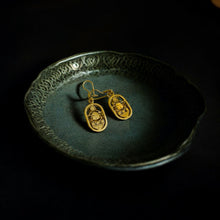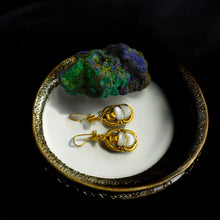
The Gold Scarab Egyptian Earrings are inspired by ancient Egypt, where the scarab beetle symbolized rebirth and protection. Crafted from gold, these earrings echo the timeless artistry and spiritual significance of Egyptian culture, making them a meaningful and stylish accessory.
- History: The scarab beetle was revered in ancient Egypt, symbolizing rebirth and transformation.
- Spirituality: Represents protection, renewal, and the cycle of life.
- Talismans: Often worn as a protective charm to bring good luck and ward off negative energy.
- Handmade: Crafted with care, emphasizing unique artistry and traditional techniques.
- Healing Properties: Believed to enhance emotional balance and inner strength.
- Material: Made from a blend of 5% gold and 95% brass; durable and resistant to tarnishing.
- Maintenance: Easily cleaned with a soft cloth to maintain shine and luster.
- Symbolism: Represents the sun's journey, the soul's transformation, and the eternal cycle of life.
- How to Wear: Pair with other gold jewelry for a layered look, or wear alone for a statement piece.
The Egyptian scarab amulet is one of the most iconic and enduring symbols of ancient Egypt, deeply rooted in the civilization's religion, art, and daily life. The scarab beetle, particularly the species Scarabaeus sacer, was revered for its behavior of rolling balls of dung across the ground, which ancient Egyptians associated with the sun's journey across the sky.
The scarab beetle's daily ritual was seen as a symbol of the sun god Ra's journey and the concept of rebirth. This association stemmed from the belief that young beetles emerged spontaneously from these dung balls, symbolizing creation and regeneration. As a result, the scarab became a potent symbol of life, protection, and renewal.
Scarabs were crafted into amulets, which were believed to hold magical properties that could protect and benefit the wearer in both life and death. They were commonly made from materials such as faience, steatite, and precious stones, often inscribed with prayers, spells, and the names of gods or pharaohs. These amulets were worn as jewelry, included in tombs, and placed in the wrappings of mummies to ensure safe passage and rebirth in the afterlife.
In the context of funerary practices, heart scarabs held particular significance. These larger scarabs were inscribed with texts from the Book of the Dead, especially Chapter 30B, which contained spells intended to prevent the heart from testifying against the deceased during the final judgment. These scarabs were placed over the heart of the mummy to serve as a substitute for the deceased's heart.
The use of scarab amulets spanned several dynasties, from the Old Kingdom through the Late Period, reflecting their sustained cultural and religious significance. They evolved in design and function, with some serving as seals for administrative purposes. The popularity of scarabs extended beyond Egypt, influencing neighboring cultures in the Mediterranean and Near East, where they were also adopted as symbols of protection and rebirth.
Today, the Egyptian scarab amulet continues to captivate the imagination and interest of people around the world. It is a symbol of the rich spiritual and artistic heritage of ancient Egypt, representing the civilization's deep connection to nature, the afterlife, and the divine. Scarab amulets are widely reproduced and cherished as pieces of jewelry, collectibles, and symbols of ancient wisdom and protection.











